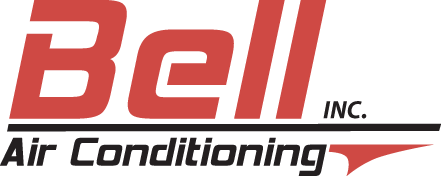
The international spread of COVID-19 has likely shifted your regular routine upside down.
When times feel uncertain you can take peace in knowing your house is your safe space. You’re likely spending more time there now. Consequently your indoor air quality is now more crucial than ever.
Did you know we can install indoor air quality products in your residence that offer hospital-grade filtration? These solutions can remove bacteria from your air, as well as allergens, odors and volatile organic compounds (VOCs).
Modern houses are securely airtight, which is good for energy efficiency. But it also means your inside air might be worse than the air outside. In actuality, the EPA says it can be two to five times worse than outdoors. This could cause a problem since we spend about 90% of our days inside.
There are many factors that can lead to poor indoor air quality, such as cleaning products and air fresheners. These might cause headaches and irritate allergies and asthma.
There’s a combination of things you can do to better your air quality. Some include improved air filters, an air purification system or an ultraviolet (UV) germicidal light.
Unsure which option is right for your residence? Our skilled techs can do an indoor air quality audit. Based upon the results, we can then suggest the best option for your family’s distinct needs.
Keep reading to learn more about the air quality equipment we sell.
Air Filtration
When browsing air filters, you should consider the MERV rating, or Minimum Efficiency Reporting Value. This gauges how successfully it filters pollutants.
One of the most average and most economical filters, flat fiberglass filters, are graded between 1 and 4 on the MERV scale. Pleated filters are slightly better, ranking between 8 and 12.
We suggest buying no less than MERV 13, for instance the HC13 Media Air Cleaner, for the optimal effect. This filter gives fresher air while limiting energy use.
High Efficiency Particulate Air (HEPA) filters are regarded as the best in air filtration, as they’re typically in use in hospitals. They’re effective at trapping 99.97–99.99% of indoor pollutants, like pollen, pet dander and smoke.
Ahead of buying a better filter, contact us at 254-307-9572. Our professionals can help you choose the best option for your equipment.
Air Purification
Lennox has some of the most advanced air purification units you can purchase. PureAir™ S and Healthy Climate™ PureAir Air Purification Systems offer hospital-grade filtration while managing all kinds of indoor air contaminants.
These powerful units can eliminate:
- 99.9% of allergens, such as pollen, dust and pet dander.
- 95% of bacteria-sized particles, such as ones that contribute to strep throat.
- 50% of VOCs and odors within 24 hours.
UV Germicidal Lights
A UV germicidal light is installed inside your heating and cooling equipment. Its penetrating rays eradicate bacteria and mold within seconds.
If your family has allergies or asthma, this system could give relief. Especially if you reside in a muggy area where bacteria and mold grow quickly.
This light also has an additional advantage for your heating and cooling equipment. It can help it last longer and heat and cool more efficiently, as it keeps the internal parts clean.
Our air quality engineers suggest combining one of these lights with an upgraded filter, such as our Carbon Clean 16® Media Air Cleaner, for optimal outcome. This filter delivers industry-leading MERV 16 filtration combined with carbon-coated fibers to remove particles from your residence’s air. It completes this without limiting your heating and cooling equipment’s airflow.
Whole-Home Humidifiers
Acquiring correct humidity in your house might help keep your household from getting sick when it’s cold. It can aid sore throats, itchy skin and chapped lips, in addition to added cold weather annoyances.
If you don’t know what your house’s humidity range is, we’ll figure that out when we complete your indoor air quality audit. While the range varies based off of outdoor temperatures, HVAC professionals typically recommend keeping it between 40–60 percent.
You can reach this optimal range with a whole-home humidifier. This system typically accompanies your furnace or air handler to provide the right level of humidity around your residence. Some equipment, like the Healthy Climate® Whole-Home Power Humidifier, use a built-in fan to circulate humidity during the time your comfort system isn’t operating.
Rely on the Experts for Your Indoor Air Quality Necessities
At Bell Air Conditioning Inc, we’re committed to making your home more relaxing. That’s why we sell Lennox air quality products, which are the most comprehensive solution on the market.
We’re also more than only your heating and cooling company. We’re concerned about the wellness of you and your household. That’s why our technicians are taking extra precautions when we arrive at your residence.
To discover more about our air quality products, get in touch with us at 254-307-9572 or contact us online. Our knowledgeable staff can also answer any worries you could have with a tech visiting your residence at this time.
—
*Based on in-duct testing that shows Healthy Climate® filters reduce airflow restriction. Greater restriction of airflow creates a greater load on a unit’s fan motor, increasing energy consumption.
